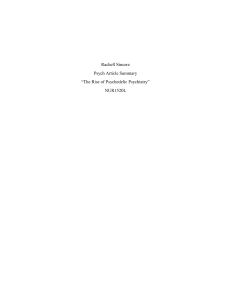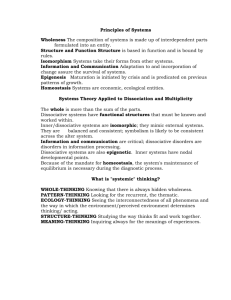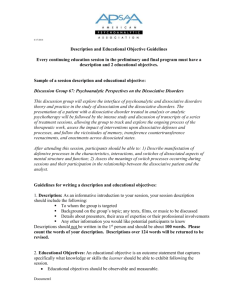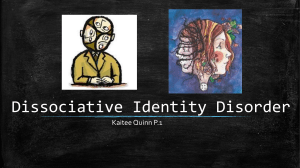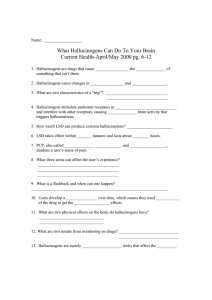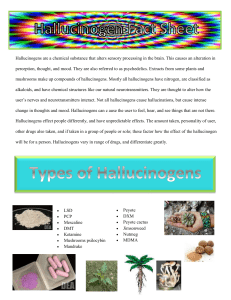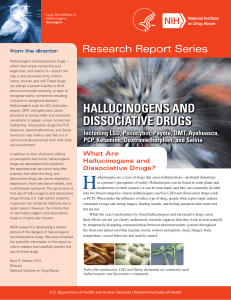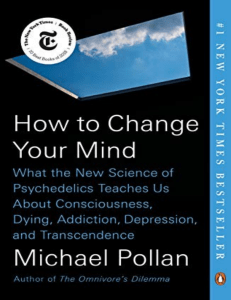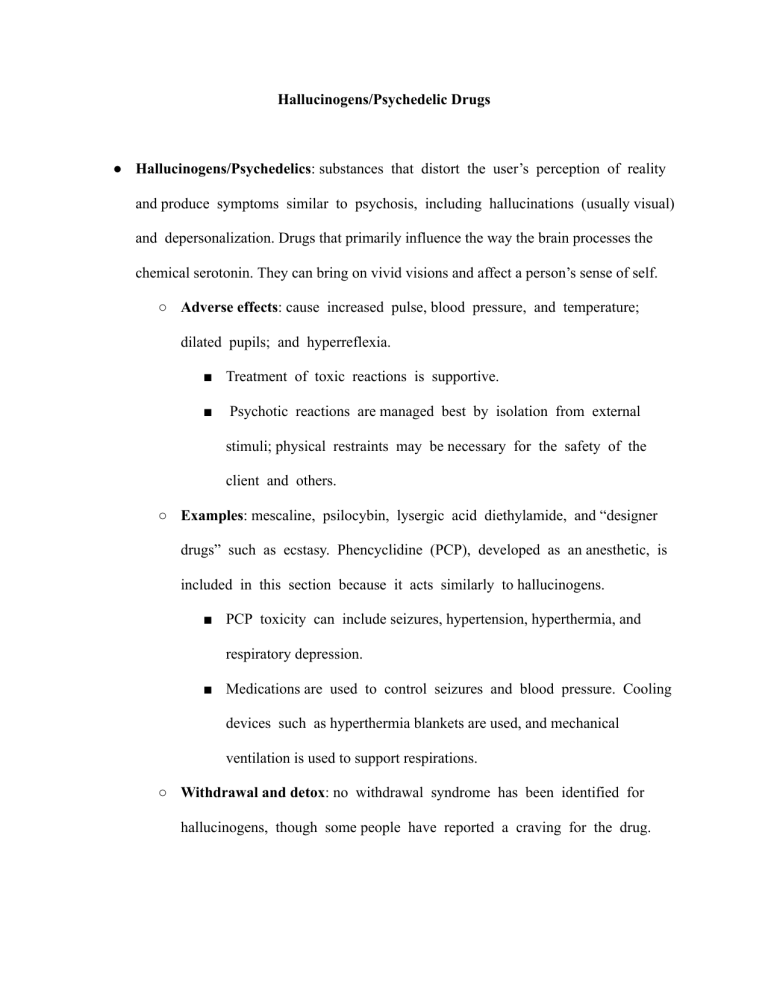
Hallucinogens/Psychedelic Drugs ● Hallucinogens/Psychedelics: substances that distort the user’s perception of reality and produce symptoms similar to psychosis, including hallucinations (usually visual) and depersonalization. Drugs that primarily influence the way the brain processes the chemical serotonin. They can bring on vivid visions and affect a person’s sense of self. ○ Adverse effects: cause increased pulse, blood pressure, and temperature; dilated pupils; and hyperreflexia. ■ Treatment of toxic reactions is supportive. ■ Psychotic reactions are managed best by isolation from external stimuli; physical restraints may be necessary for the safety of the client and others. ○ Examples: mescaline, psilocybin, lysergic acid diethylamide, and “designer drugs” such as ecstasy. Phencyclidine (PCP), developed as an anesthetic, is included in this section because it acts similarly to hallucinogens. ■ PCP toxicity can include seizures, hypertension, hyperthermia, and respiratory depression. ■ Medications are used to control seizures and blood pressure. Cooling devices such as hyperthermia blankets are used, and mechanical ventilation is used to support respirations. ○ Withdrawal and detox: no withdrawal syndrome has been identified for hallucinogens, though some people have reported a craving for the drug. ■ Can produce flashbacks, which are transient recurrences of perceptual disturbances like those experienced with hallucinogen use. ■ These episodes occur even after all traces of the hallucinogen are gone and may persist for a few months up to 5 years. ● Dissociative drugs: drugs that primarily affect how the brain processes the chemical glutamate. These drugs can make people feel disconnected from their body and environment. While dissociative drugs can alter perception, they also typically make people feel disconnected from their body and environment. ○ Includes: ketamine, PCP ● Psychedelic and dissociative drugs temporarily alter thought patterns, mood, and perceptions of reality. People who use these substances report feeling strong emotions, ranging from intense happiness and a feeling of connectedness to fear, anxiety, and confusion. Many people who use psychedelic drugs, such as psilocybin and LSD, report seeing vibrant shapes, colors, and scenes and reliving vivid memories. People who use dissociative drugs, such as ketamine and PCP, describe experiencing distorted vision and hearing. ● People report using psychedelic and dissociative drugs for a variety of reasons. People may use them for their mind- and mood-altering effects, for recreation, or to have an emotional or spiritual experience. Individuals also report using these drugs in the hopes of improving their mental health or well-being or easing pain or stress, but more research is needed to determine their effectiveness for these purposes. ● The U.S. Food and Drug Administration has approved the ketamine derivative esketamine as a treatment for severe depression in patients who do not respond to other treatments. The FDA has also granted breakthrough therapy designation for two formulations of psilocybin being studied as potential medical treatments for depression. ● While scientists are still studying their effects, research suggests that some psychedelic and dissociative drugs may promote positive changes in thinking and mood. Researchers have suggested that these effects, including changes in brain functions that promote openness to new thoughts and experiences, may be valuable for supplementing mental health treatment. ● There is some evidence that psychedelic drugs might bring about or trigger schizophrenia-like illness in people with predisposing factors, but little evidence that they cause long-term psychiatric problems for most people
